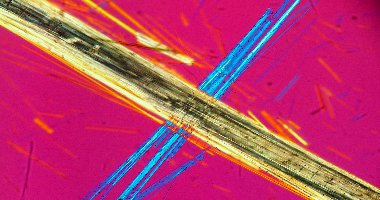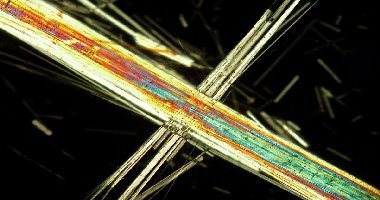Asbestos Health Effects.
What is Mesothelioma?
Malignant mesothelioma is
an uncommon, but no longer rare, cancer that is difficult to diagnose and
poorly responsive to therapy. Malignant mesothelioma is the most serious of
all asbestos related diseases.
A layer of specialized cells called mesothelial cells lines
the chest cavity, abdominal cavity, and the cavity around the heart. These
cells also cover the outer surface of most internal organs. The tissue
formed by these cells is called mesothelium.
Mesothelioma was recognized
as a tumor in the late 1700's.
However it was not until much later, in 1960, that this particular type of tumor was described in more detail and even more importantly, its association with asbestos exposure was recognized.
Although the disease is much more commonly seen in 60-year-old men, it has
been described in women and early childhood as well. The cause of the
disease is not so well understood in these latter two groups, but there is
some evidence of possible asbestos exposure for some of thesecases as well.
About three-fourths of mesothelioma occurrences start in the chest
cavity and is known as pleural mesothelioma . Another 10% to 20% begin in
the abdomen and is called peritoneal mesothelioma. Pericardial mesothelioma
, starting in the cavity around the heart, is very rare. The covering layer
of the testicles is actually an outpouching of peritoneum into the scrotum.
Mesothelioma that affects this covering of the testicles is quite rare.
What is Asbestosis?
Asbestosis disease is a serious lung inflammation caused by asbestos exposure that could lead to Mesothelioma.
Asbestosis is caused by inhalation of asbestos fibers. Asbestos fibers are microscopic and virtually indestructible. The asbestos fibers can easily flake off and are small enough to be completely inhaled deep into the lungs. When they are inhaled into the lung, the lung's defense cells try to destroy the asbestos fibers, but the body's defense mechanisms cannot break down asbestos. The result is that the asbestos fibers remain in the lungs and cause scarring and the inflammation continues for decades.
This thickening and scarring prevents oxygen and carbon dioxide
from traveling between the the tiny air sacs of the lungs and into the blood
stream, so breathing becomes much less efficient. In people who develop
Asbestosis, the inflammatory process continues to progress, fueled by the
indestructible asbestos fibers even after the exposure to asbestos has
ceased.
Symptoms
Health Effects of Pleural Plaques
Caused by Exposure to Asbestos
As with many
asbestos-related health issues, most problems that result don’t typically
appear until 20 years or more after initial exposure, making them difficult
to diagnose.
Symptoms of Pleural Plaques
In many instances, pleural
plaques are without symptom and the good news is that pleural plaques are
benign and will not develop into cancer over time, but their symptoms can be
somewhat problematic for patients -- symptoms and health effects of pleural
plaques include:
- Trouble Breathing -
Do you give out out breath easily, even while completing simple tasks?
Depending on their size, pleural plaques can restrict the amount of air
your lungs are able to take in, limited your ability to exercise, and
much more.
- Chest Pain -Does
your chest area feel tight? Do you experience any sustained pain?
Typically, that pain can be even more pronounced when you cough, sneeze
or breath deeply.
- and more
Pleural plaques should be
taken seriously, because while by themselves, they don’t possess
life-threatening potential, they could be an indicator of a larger problem,
such as mesothelioma or other asbestos-related diseases.
It’s important that you
receive the problem testing and guidance from a medical professional on how
to best deal with a diagnosis.
Symptoms of Pleural Thickening
from Asbestos Exposure
Pleural thickening, unlike
pleural plaques, aren’t singularly caused by exposure to asbestos, however,
many cases are directly linked. Asbestos is tiny material that cannot be
caught by the lung’s natural filtration system due to its microscopic size
-- they can come to rest in the body, causing inflammation, which can result
in all kinds of health issues, including mesothelioma.
Health Effects of Pleural Thickening
- Trouble Breathing &
Shortness of Breath - The thickening of the membranes
can constrict the lungs, resulting in difficulty breathing. You can
experience this strain on your breath during exercise, or even while
working to complete simple tasks.
- Lingering Cough -
Coughing and wheezing are also the health effects of pleural thickening.
Coughing fits can occur suddenly and without warning, and can often be a
present possibility at all times.
- Chest Pain -
Pain in your chest is never anything to ignore -- such as the case with
those who have been repeatedly exposed to asbestos in past work or home
environments. Pleural thickening can get thick enough to cause
discomfort.
- and more
Certain medications
available by a prescription from a trusted medical professional can often
help deal with the symptoms of pleural thickening and COPD. Speak to your
family doctor and construct a plan to help deal with these issues.
Health Effects of Pleural Effusions
Fluid that builds up in
between the lungs and your chest cavity is known as a pleural effusion.
Pleural effusions can cause considerable discomfort for patients diagnosed
with the issues, and can be a precursor for future problems.
Unlike pleural plaques,
pleural effusions don’t solely resort from long-term exposure to asbestos in
the workplace or at home, however, asbestos is considered a leading cause of
pleural effusions, along with congestive heart failure, adverse reactions to
drugs and more.
Symptoms of Pleural Effusions
If you currently suffer
from the following symptoms, it might be time to ask your medical
professional about your risk of a pleural effusion: shortness of breath,
trouble breathing, dull or sharp pains in the chest cavity, coughing fits,
frequent hiccuping and more.
Like pleural thickening,
which is the thickening of the protective pleura membrane that coats your
lungs, people suffering from a pleural effusion can also be symptom-free,
which is why it is critical to report to your doctor any past exposure to
asbestos in order to aid in diagnosis.
How to Treat & Test for Pleural Effusions
X-rays of the chest cavity
is the sure-fire way to officially diagnosis a pleural effusion in patients
reporting those symptoms. Doctors can also run physical tests and checks
such as tapping on the chest to make a diagnosis, which can also signify
further health-related issues such as cancer.
Depending on the cause of
the effusion and its size, treatment will be needed. Certain minor,
non-invasive treatment options are available -- for others, a drain must be
inserted into the cavity to remove fluid. The latter option might even
require a surgical procedure and possible hospitalization.
As you can see, no one
wants to suffer from symptoms of untreated asbestos. Test now, and receive
fast, accurate asbestos testing results from EMSL Analytical.

















